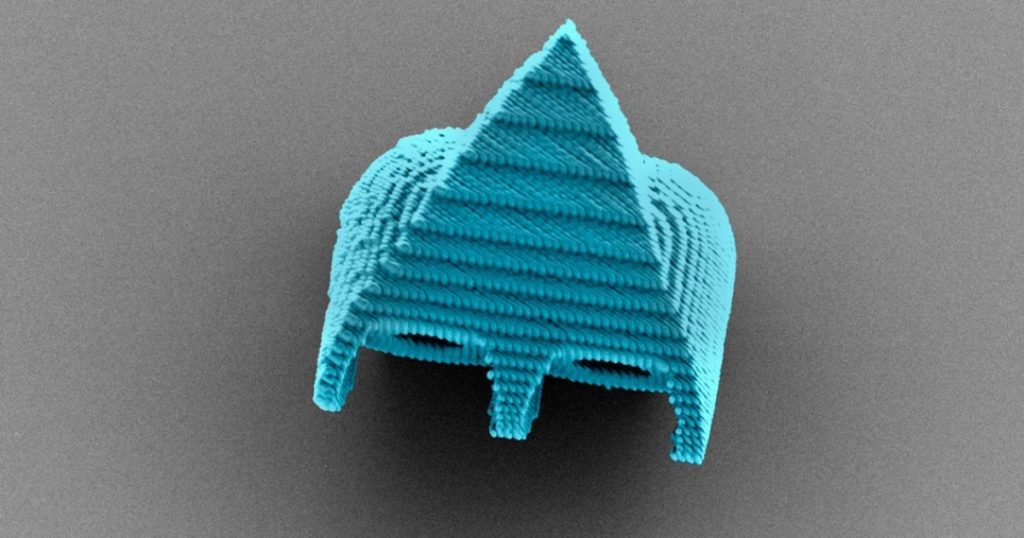In this new age of science and technology, downsizing robots to carry out different tasks in the human body is not the challenge. But to power these microrobots externally without using any onboard batteries is the real issue. And it seems like scientists have finally caught a breakthrough by utilizing ultrasound waves to steer these robots.
Professor Mingming Wu and his team at Cornell University have started making use of laser lithography system to 3D print animal-cell-sized triangular “micro-robotic swimmers”. Each microrobot is made up of a hydrophobic resin with two cavities on its back with different diameters of openings. The hydrophobic property of the resin results in an air bubble being formed in each cavity when one of the swimmers is placed in a liquid environment. When an external ultrasound transducer is aimed at the swimmer, the sound waves cause the bubbles to oscillate and move the robot forward.
By using the external force of sound waves on the air bubbles, the swimmer can easily be steered by remote control. Contrary to previous inventions in which the microbots were propelled by a single bubble and required two different ultrasound transducers, these dual-bubble design bots only make use of one ultrasound transducer and achieve the same results.
What’s left now is to make these microbots from biodegradable and biocompatible materials so that they can easily dissolve within the body after administrating drugs or carrying out other jobs. This way, the risk of inserting and removing these robots into the human body would be greatly reduced and it wouldn’t pose a threat to the environment either. The team published their paper in the journal Lab on a Chip which you can read here yourself.

